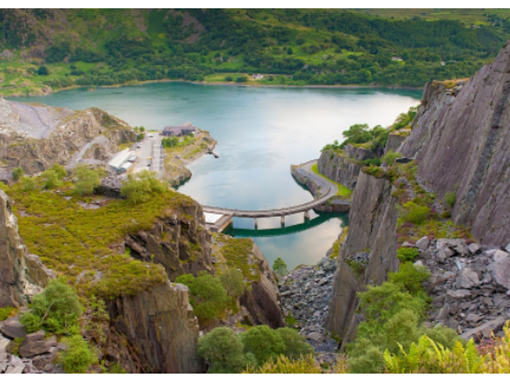COP27 and the Renewables Market – Money, Morals and Blame
I am noticing every week now feels fuller than the previous, we have so much to pack into 7 days!
Last Friday – Settling in the Seismic Devices
Also Friday – non-availability of clamps for Solar Panels and Servicing for boiler … the hunt begins
Weekend – Colder, wind and gales = sorting fuel for the wood burners and pellet boiler
Tuesday – First ever Big Green Adventure walk with preparations and follow up
Thursday – Autumn Statement and
Today – Solutions to the Solar and Servicing, thanks very much Naked Solar in Newquay!
COP 27 the latest
There are choices of information as to the latest on events in Egypt. The Guardian article Thursday concentrated on the 20 sides of final document, which is still full of holes. A rather more useful source is the New Scientist report
A stream of newly arrived delegates has injected a fresh buzz into the cavernous conference halls of COP27 during the second week of climate talks in Sharm El Sheikh, Egypt, but behind-the-scenes negotiations are in disarray, with talks running well behind schedule.
Discussions on key areas, such as loss and damage – payments from the most polluting nations to those dealing with the worst effects of climate change – and strengthening emissions cuts, reached a political impasse on 14 November, but ministers aren’t due to intervene to force progress until the middle of the week.
Meanwhile, talks on the cover text – a political agreement traditionally struck at the end of a UN climate conference – are still in the very early stages. There is currently no language on the “phase-out” or “phase-down” of fossil fuel use in the document, which Greenpeace said in a statement was “scarcely credible”.
Two positive things to grasp onto, from the past 7 days, are:-
- Joe Biden and Xi Jinping agreed to restart formal talks on climate issues, after a three-month break caused by US politician Nancy Pelosi’s visit to Taiwan. The White House released a statement saying the two leaders “agreed to empower key senior officials to maintain communication and deepen constructive efforts on climate change and other issues”.
- President-elect of Brazil, Luiz Inácio Lula da Silva attended, telling rapturous crowds that he promises to restore the Amazon rainforest and chase down climate criminals. Huge numbers gathered to see him speak, making him one of the superstars of the summit. This step forward has to be seen in context – Brazil is deeply divided over Lula’s return to power and his job to unite the country won’t be easy. The president told delegates that Brazil will prove that it is possible to generate wealth without destroying the environment, adding it is impossible to separate tackling global warming from poverty.
My source for this section is the BBC and the link for further reading is https://www.bbc.co.uk/news/science-environment-63625698
Settling in our Seismic Devices – Orange Bombe & Raspberry Shake
Last week the visiting team of academics from Oxford and Bristol Universities spent about 5 days installing 450 little orange bombes (I use the term as a fruity dessert, not an explosive!!) in the ground, across an area of only a few kilometres in and around Luxulyan.
The purpose of these highly sensitive devices is to record the surface effect of ‘elastic waves’, which come through from very deep below ground. This little project is different from many larger scale ones, with the hope that the fine detail being seen may reveal unexpected results. It is very much a detective-type operation, with interpretation of signs they see. If we try to imagine the sectors that might find this information valuable, clearly mining, geo-thermal and CCUS need it, but also perhaps it could help overground too e.g. in monitoring the safety of bridges and flyovers, carrying massive weights of vehicles or trains. That is just me guessing. Write in to advise, if you know better.
Here are a few images of the orange ‘bombes’, which have been well hidden. The layout of 3, lying in different planes and directions, allows for collection of 3D data.



Later in the day, we installed a Raspberry Shake box in my downstairs bedroom. I heard about Raspberry Pi ages ago (it dates back to 2012) – Raspberry Pi is a series of small single-board computers developed in the United Kingdom by the Raspberry Pi Foundation in association with Broadcom. The Raspberry Pi project originally leaned towards the promotion of teaching basic computer science in schools and in developing countries.
This box is an extension of their equipment, sending back live stream information 24/7. My helper with this was Joanna Holmgren; a snippet from her email below explains what the live stream looks like:-

Once on the website, it is a very quick move to change screen and see an overview of the past 24 hours, in fact I selected a couple of days for comparison. Hard to guess what caused the big jumps on the latter, lower strip. We decided it could even be very heavy rain.
24 hour records


If this monitoring system is of interest, here are 2 more sites to look at – the raspberry shake posters https://raspberryshake.org/news/scientific-posters/
and on Facebook locally, an earlier research project that Joanna wrote up and published in geoscience world.
Truro School Geology Department
soonteSpdr4a4904ly6294f1a79cu27hu11ata2g 8t2M5a151mtm50414l ·
Data from the Truro School Raspberry Shake seismometer has been discussed in another academic paper related to the United Downs Deep Geothermal Power project, by Joanna Holmgren and Maximilian Werner of Bristol University. You can read the paper in the new open access journal, The Seismic Record, here: https://pubs.geoscienceworld.org/…/Raspberry-Shake…
Shortage of materials and staff in Renewables
The support frame for my solars is all ready for putting the panels back on, but we have hit a big problem – with such an enormous increase in demand for solar systems there is shortage of brackets to hold panels. I also found at the same moment that my usual company for servicing the wood pellet boiler is immensely over-stretched and may not see me this side of Christmas. Trying to see this in a wider perspective, I observe that the alteration of our energy markets as a result of Putin’s war, has absolutely changed the demand for renewables, probably more than any government subsidy scheme could ever have done. The market forces are now driving change and creating shortages, however, the whole point of governments directing public funds into e.g. Feed In Tariffs (FIT) or Renewable Heat Incentive (RHI) payments was meant to be preparation for a greener and more resilient future.
When you look back over the past decade or so you can see some incredibly poor decisions and inept management of systems. Take the closure of our gas storage facility announced in 2017 and the warning note that was sounded in this article from The Guardian
@adamvaughan_uk Tue 20 Jun 2017 19.32 BST
The closure of the UK’s largest gas storage plant has prompted warnings that the country faces more volatile winter gas prices and is becoming too dependent on energy imports.
British Gas’s owner, Centrica, said it was permanently closing the Rough facility off the Yorkshire coast because it had become unsafe and uneconomic to reopen the facility, which had been temporarily shut over safety fears.
The loss comes on top of the diplomatic crisis in Qatar, which supplies a third of UK gas imports and has highlighted the UK’s increasing reliance on hydrocarbon imports.
Energy price cap likely to go ahead despite warnings of ‘timebomb’
Centrica said Rough, which opened in 1985 and could hold about nine days’ gas supply, will cease to be a storage facility once its remaining gas reserves have been sold over the next four to five years.
Panorama reports on DRAX
Then consider the way subsidies were set up and used to encourage the managers of DRAX power station to change their fuel from coal to wood pellets. There is no doubt that Drax is an important facility, providing 12 per cent of our renewable energy, but a BBC Panorama report on October 8th explained ‘when Drax changed over from burning coal to burning wood, with a hefty government subsidy of around £6bn as reward, unbelievably it started emitting more CO2 per KW of power produced.’
https://www.bbc.co.uk/iplayer/episode/m001cw6z/panorama-the-green-energy-scandal-exposed
The BBC journalist, Joe Crowley, clearly decided from the outset he would pour scorn on Drax and put the blame on the management there, however you could just as easily put it on the government who took the decision to incentivise use of wood pellets for fuel in the first place.
They called it ‘sustainable’ because it comes from trees and eventually – many decades later – a tree chopped down to burn for electricity in 2022 will be replaced by another mature tree, which has captured quite a lot of carbon as it grows. But we can see the flaw in this. We cannot afford to spew out more tons and tons of CO2 today, with the pay-back time so far off in the distance.
I have some sympathy for Drax, because I have been fed the same line from government, with RHI payments in return and I swallowed it hook, line and sinker 3 years ago. But the scale of their lies and misdemeanours, logging big trees in prime forests of British Columbia, is shocking. Their CEO should be in front of a prosecutor for the big lie, rather than regurgitating the official line ‘our business model relies on use of waste wood products only’.

What next with wood fuels?
A new biomass strategy is predicted to be announced later in 2022, so I was awaiting news in the Autumn Statement. But no. Investment Week reports that ‘the UK will “go further, with a major acceleration of home-grown technologies like offshore wind, carbon capture and storage, and, above all, nuclear”. The Chancellor’s rhetoric was welcomed by green groups, but there was also widespread frustration at the failure to deliver a bolder policy package to help deliver on emission targets that the UK is currently on track to miss.
In a related IW publication, called Business Green, you will find a round up of reactions from across the green economy, which I summarise as collectively saying the Chancellor’s statement will achieve ‘not nearly enough and with no sense of haste, just delay’. https://www.investmentweek.co.uk/news-analysis/4060390/autumn-statement-2022-green-economy-reacts-hunts-plans
More on wood and Miscanthus
When the biomass review does arrive, I really hope to see improved inspections and fines for any breaking of the rules. If we are going to burn wood then the supply needs genuinely to be off cuts, substandard, timber yard waste and – I believe – much greater growing of the magic plant ‘Miscanthus’. Also known as Elephant Grass, it can thrive on waste ground, slopes and other parts of UK farms that are not suitable for more profitable outputs. It will keep growing fast, renewing itself every season, for 15 years.
I would be so pleased to buy pellets cut down from local waste ground areas, dried and brought to my boiler instead of coming from Spain. This notice about growing in the South West came out in 2019, but I am not sure what has happened since. Ran out of time to click those more recent articles, sorry.

Like my giant fennel plant below, when you chop it back to the base Miscanthus grows back up in no time at all. The cut stalks are perfect for burning, of far less value than mature trees. Another point – I see numerous piles of prunings in our woodland, being left to rot and emit CO2. Yes some should stay, for habitat reasons, but there is a lot. Can we begin to gather piles like these, around the country?



Quite honestly, the word ‘sustainable’ for almost all burning processes of biomass should not be allowed; it should only be applied to burning of bona-fide waste products such as saw dust and shavings. The one place I know for sure sells a product of that nature is WoodCut Ltd near Bugle.
Wood burning remains controversial for other reasons too, so next time I will share a reader’s opinion, burning with indignation, about wood burners and health impacts.
Green Adventure Days: 15th November, Luxulyan – and next time – 4th December, Par
As the day approached I altered plans, so our walk would be shorter and it seemed we would avoid the very wettest weather. Was I successful on that? No. We got drenched, however it was a very rewarding, interesting day. Full marks to the people who did it all by bus. The number 31 brought them from St Austell and returned them on time, but – ridiculously – not to their starting point at the bus station. They had to add an extra few kms as a result.
We established what will be the ‘normal’ plan, with a gathering inside a dry building for first briefing and coffee, a circular walk with 10 Treffry Tales to share and an optional ending for lunch in a pub. We will continue to encourage and support those who will be brave enough to use public transport, in as many ways as we can, including setting up a discussion time with the new Cornwall portfolio holder for Transport.
The gallery below shows some highlights and if you like the idea of joining the next one, on SUNDAY 4th DECEMBER, in and around Par, please send an email to register. The cost is a £10 note in the green bucket or (sorry I have to repeat), please join as an annual member for £15 with all the extra benefits it brings. It could make the difference between the centre continuing to open for schools and the public or returning to operation as simply my home. The renewal of insurance happens next week, 30% more £s than last year and an eye-watering amount. I simply cannot keep doing this year on year, out of my own pocket.










